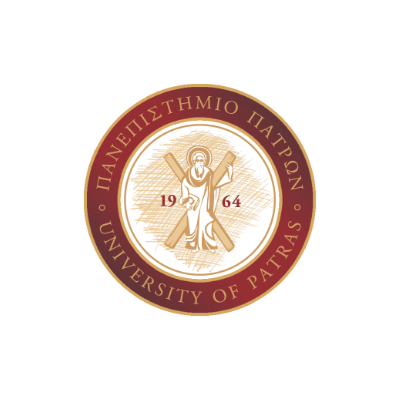
University of Patras
A. ENTITY DESCRIPTION
The University of Patras has five faculty members, about ten postdoctoral fellows, and a varying number (currently 30) of research engineers and postgraduate students. The research activities of UPATRAS mainly focus on the basic and applied research in the fields of Aircraft Structures and Materials, as well as the related courses of undergraduate and postgraduate students’ education. The Lab is European-wide and internationally recognized in the scientific and research community for performing pioneering research both basic and applied in the fields of Aircraft Structures and Materials, with a focus on holistic aircraft optimization with regard to quality, cost, and environmental footprint. More specifically, the research activities lie in the fields of Materials Science and Technology, Multi-Scale Computational Structural Analysis, FEM-based digital twin development, Design Analysis & Optimization of Metallic and Composite Structures, Cost Evaluation of Advanced Manufacturing technologies, and Holistic Optimization of aircraft components with respect to quality, cost, and environmental footprint. The scientific personnel of UPATRAS has acquired significant research experience in the science, technology, and applications of aircraft materials and structures by their involvement in several EC-funded Projects, since the early nineties, delivering high-quality research outcomes. Finally, it should be mentioned that the University of Patras is the single European University Founding Member in Clean Aviation and represents European Academia in the Governing Board of the CA JU, as well as the University of Patras belongs to the founding entities of the EASN Association and holder of its chair since its establishment in 2008 up to 2019.
B. ROLE IN THE HERFUSE PROJECT
The University of Patras participates in Herfuse via the Laboratory of Technology and Strength of Materials (LTSM), which belongs to the Division‘Applied Mechanics and Material Technology of the Department of Mechanical Engineering and Aeronautics’.
The research activities of UPATRAS in Herfuse will mainly focus on the basic and applied research on the topics of design of structural interfaces and selection/adaptation of materials systems. More specifically, the first UPATRAS main contribution lies in T 4.1 ‘Material and Manufacturing enablers’, in which testing of selected coupons, structural details, and small-scale stiffened panels in static, fatigue, damage propagation, and impact testing conditions, to support the Material and Manufacturing enablers will be performed. In addition, in T 4.2 ‘Joining and Assembling enablers, UPATRAS will focus in the design, simulation, and validation of the critical structural novel joining concepts for the advanced metallic and/or composite structural elements of the fuselage, by investigating various crack-stopping concepts, to realize damage tolerance adhesive bonded and welded fuselage joints. The second UPATRAS main contribution lies in T 4.4 ‘Structural Analysis’, in which UPATRAS will develop digital twins for selected representative critical stiffened panels of the novel fuselage. The third UPATRAS main contribution lies in tasks 5.3 and 7.3, for the HER Systems Integration Preliminary Design and Stressed Integration. In particular, detailed design of the HER systems based on UPATRAS enabling technologies following the first trade-off results, HERA, and other CA projects. Integration of H2 tanks and systems into the hybrid electric aircraft fuselage, and the structural integration of the batteries, fuel cells, and H2 tank systems that impact airframe mechanical and thermal performances and drive the structural scheme solutions and material system functionality will be carried out by UPATRAS. In addition, UPATRAS will contribute to the definition of the Systems Integration Concept, focusing on new power sources material and structural issues in the frame of T3.4 HER Systems Integration Concept.